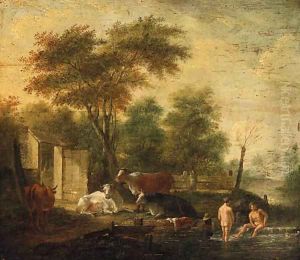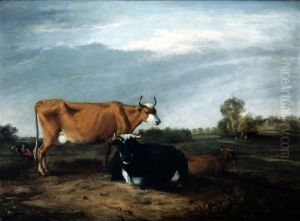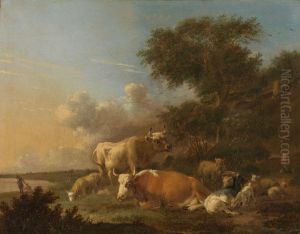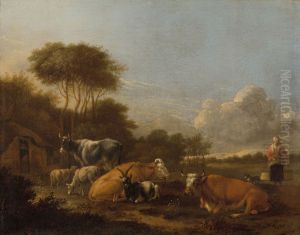Albert Klomp Paintings
Albert Klomp, born in 1612 in Amersfoort, Netherlands, is a somewhat enigmatic figure in the Dutch Golden Age of painting, a period renowned for its remarkable outpouring of artistic talent and innovation. Despite the scant information on his life and the relatively few works attributed to him, Klomp's contributions to the Dutch landscape genre offer valuable insights into the period's aesthetic shifts and the diverse approaches to depicting the natural world.
Klomp's artistic journey began in the thriving artistic atmosphere of the Dutch Republic, where a burgeoning middle class's demand for art stimulated an unprecedented production of paintings. Unlike many of his contemporaries who depicted the Dutch landscape with meticulous detail and a serene atmosphere, Klomp's works are noted for their dynamic compositions and a somewhat rougher, more vigorous brushwork. This distinct style suggests an emphasis on the emotional and atmospheric aspects of the landscape, predating the Romantic movement's similar focus by over a century.
Throughout his career, Albert Klomp was particularly fascinated by scenes of cattle and pastoral landscapes, subjects that were immensely popular in the Dutch Golden Age. These compositions often featured cows and herdsmen set against expansive views, reflecting not only an idyllic vision of rural life but also the economic and cultural significance of livestock in 17th-century Dutch society. Klomp's ability to infuse these scenes with a sense of vitality and movement distinguished his work from that of his peers, making him a unique voice among the landscape artists of his time.
Despite his talents, Albert Klomp remains a peripheral figure in Dutch art history, with limited documentation on his life and works. This obscurity may be attributed to the sheer volume of artists working during the Dutch Golden Age, many of whose careers have only been partially reconstructed through archival research and the study of surviving paintings. Klomp's death in 1688 marked the end of a career that, while not as documented or celebrated as that of some contemporaries, contributed to the rich tapestry of Dutch landscape painting with its unique aesthetic perspective and interpretation of the natural world.



